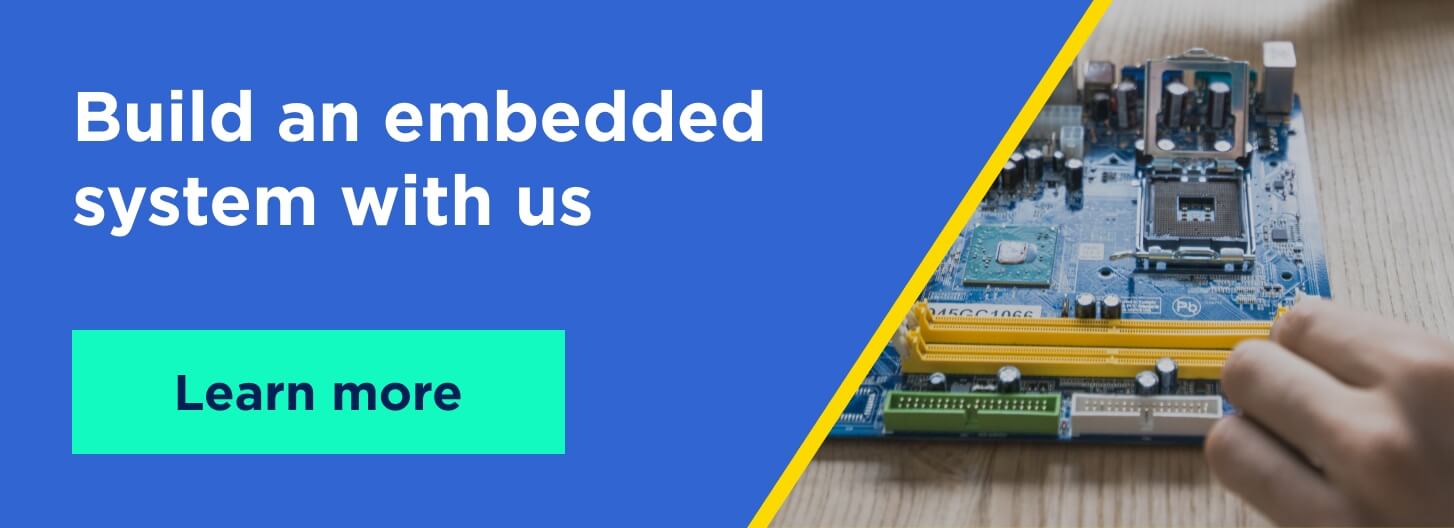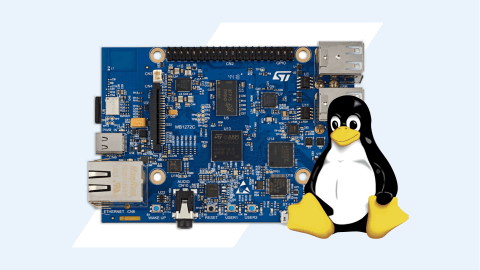Modern technologies require embedded systems that are not just functional but tailored to meet specific requirements. Whether it's the demand for specific hardware compatibility, stringent performance constraints, or limited resources, off-the-shelf solutions often fall short. This is where the Yocto Project steps in, offering a toolbox that empowers developers to create Linux distributions tailored to unique needs and helping your solution stand out on the market.
In this article, you will learn what the Yocto Project is and how to use it, as well as gain invaluable tips for navigating this technology.

What is the Yocto Project?
The Yocto Project is one of the most popular go-to open-source technologies among embedded engineers. It provides the necessary flexibility in customization for businesses that seek uniqueness and want to stand out from their competitors. Instead of limiting themselves to existing Linux distributions, embedded engineers can create a separate distro tailored to specific requirements. Yocto helps build embedded systems based on different types of hardware architecture. This technology is a must when a project requires multi-platform development. Proceed with reading to learn what is Yocto used for.
The Yocto Project architecture and components
The Yocto Project consists of three main components: OpenEmbedded build system, BitBake, and Poky. We will cover these components in more detail below.

OpenEmbedded build system
OpenEmbedded is a framework for embedded Linux development. OpenEmbedded build system includes OpenEmbedded-Core (OE-Core), metadata containing metadata files, basic recipes, and classes. It serves as a layer that enables basic functionality for creating a Linux distribution. OE-Core covers distro and machine configurations and class definitions.
BitBake
BitBake is a part of the OpenEmbedded build system. BitBake serves as the central component of the build system responsible for parsing metadata and orchestrating the execution of tasks, including source code compilation and software packaging. It is also responsible for task scheduling.
Poky
Poky comprises the OpenEmbedded Build System, covering BitBake and OpenEmbedded-Core. It includes a rich repository of metadata to encourage a custom distribution development. With the help of OpenEmbedded Build System, Poky allows you to build a small-scale embedded OS. Serving as an integration layer over OE-Core, it ensures a basic distro infrastructure, serving as a blueprint for customizations. Additionally, Yocto ensures developers can analyze embedded system components within the Yocto Project. Poky is a pre-configured build environment with a variety of metadata. It allows for a smooth start with embedded Linux Yocto development.
The Yocto Project use cases and applications
The Yocto Project has practical applications in the following domains:
Customized Linux distributions
Yocto empowers developers to build Linux distributions from scratch, aligned with the client’s unique needs. This proves to be effective when commercial Linux distributions are too large or lack essential features.
Embedded system development
Engineers face different challenges when it comes to embedded system development, including hardware compatibility, performance limitations, and constrained resources. The Yocto Project is a tool that accommodates a multitude of hardware architectures and enables the creation of highly optimized Linux distributions tailored for such systems.
IoT Devices
IoT devices have the same limitations as embedded systems, including resource constraints and specific performance needs. Using the Yocto Project, engineers can create lightweight and unique Linux distributions perfect for IoT device development.
Automotive systems
Automotive projects require embedded engineers to create software with high reliability, real-time capabilities, and security. The Yocto Project's adaptable framework and advanced customization capabilities ensure support and software systems alignment with automotive industry requirements.
Why use Yocto for embedded Linux applications

The Yocto Project offers an abundance of cross-platform tools and metadata that empower engineers to develop customized Linux distributions swiftly while working directly with source code. If comparing Yocto vs Ubuntu, note that Ubuntu is a Linux distribution, while the Yocto Project allows you to create distributions. It enhances the embedded Linux development experience by enabling the creation of unique systems tailored to meet your embedded application needs. This narrowly focused approach ensures that only the necessary software components are included, resulting in a more customized and stable system.
Yocto Project's benefits extend beyond development. This technology enables system management and archive tasks. Engineers can fine-tune their systems to strike the perfect balance between memory footprint and processing speed, aligning their projects with the exact requirements of their applications. In large-scale enterprise projects, engineers can leverage the adaptability of Yocto to tailor Linux distributions and use the strengths of fundamental Linux systems as the foundation for numerous end products. This versatility reduces the complexities associated with customizing Linux distributions and facilitates the challenges tied to cross-architecture migrations.
The Yocto Project streamlines the development process, optimizing system performance and offering boundless possibilities for customization of embedded Linux applications.
6 tips for working with Yocto

If you’ve ever felt stuck with custom distro development, we prepared a short Yocto tutorial with tips that will help you navigate through this technology.
Embrace Git over tarballs
When working with Yocto, opt for Git instead of tarball downloads. Git seamlessly handles software updates, ensuring you stay up to date with implementing bug fixes effortlessly. Tarball downloads put the responsibility of updates on you.
Leverage the layer index
For Yocto Project Compatible layers (known for structural continuity and rigorous testing), start with the Compatible layer index. If you can't find what you need, explore the general layer index. Remember that not all layers are created the same way — some may lack usability. Navigating this landscape often involves a trial-and-error approach, consultation with mailing lists, or collaboration with fellow developers in shared spaces.
Don't consolidate everything in one layer
Avoid the temptation to mix everything within a single layer. Instead, use distinct layers to logically organize your build components. Think of creating layers for your distro configuration, BSP, GUI, applications, and middleware. This separation will streamline future customization and reusability.
Don’t change the Poky layer
Don’t modify the Poky layer since any changes will vanish when you update your project to the next release.
Use package feeds for efficiency
Speed up your build process with package feeds. These feeds not only save time during development but also prove invaluable for those who will install the software. Package feeds create a repository, making it simple to access missing libraries and dependencies without the hassle of manual copying.
BitBake scripts
Discover BitBake scripts in your Yocto toolkit. For instance, Devtool simplifies kernel customization and recipe generation, sparing you from building an SDK or creating a cross-compilation environment. BitBake-layers script helps when you develop layers. Bitbake-dumpsig/diffsigs script comes in handy when you need to pinpoint why BitBake recompiles a multitude of things due to dependency changes. These scripts are your allies for efficient Yocto development.
If you are diving into developing with Yocto from scratch or exploring a specific area of interest, our embedded team is always ready to help.
Real examples of systems using Yocto
Embedded engineers at Lemberg Solutions develop custom solutions using the Yocto Project. Read below to learn more details about the products they've created.
Embedded software development for 3D bioprinters

With bioprinters already in production, CELLINK wanted to find a reliable tech partner with solid experience in the development of IoT systems who could provide experts in С++, Qt, Embedded Linux, Marlin, MQTT, and Flutter.
Using the Yocto Project, our embedded engineers made the devices function more smoothly. We modified the Embedded Linux apps and developed new features for them. Moreover, we fixed communication errors between the UI and the printer’s middleware. Read more details about the project development.
Embedded vision prototype for livestock weight monitoring

For our client Barkom, we developed a first-of-its-kind system — a computer vision-based prototype for automated weight monitoring in pig farms, which was built with the Yocto Project. Our engineers created a portable device with a height sensor and camera stabilizer to help an ML model better recognize a pig’s weight. The embedded engineering team also integrated high energy consumption lighting and passive 3D cameras to increase the quality of the images. Find out more about this project.
How we can help with your Yocto Project
We create tailored Linux system design so you can get a scalable and adaptable embedded system that perfectly aligns with your product requirements and customer expectations. Our company offers custom Linux BSP development. Whether it's kernel fine-tuning, hardware architecture enhancements, middleware creation, or seamless cloud integrations, our team is fully equipped to cater to your specific needs. We have practical experience with the most popular build systems, including Yocto Project. Learn more about our embedded Linux projects.
User experience with your embedded system also matters. Our embedded Linux services ensure your system has an intuitive interface since we leverage top-tier UI frameworks and libraries like Qt and TouchGFX and can craft a custom Android ROM. Our embedded Linux engineers enable audio and video processing with the power of the GStreamer framework, facilitating audio/video streaming and processing seamlessly.
Our certified project management office and established development workflows adhere to ISO 9001:2015 and ISO 27001:2013 standards, ensuring quality and security during project development. Unlock your project success with our Yocto Project expertise and read more about our embedded development services.

Takeaway
The Yocto Project offers a rich toolbox that empowers engineers and developers to build custom Linux distributions. Its significance for embedded systems lies not only in its versatility but in its ability to meet the unique needs of the clients.
Whether you're navigating the complexities of IoT, optimizing automotive systems, or enhancing industrial processes, Yocto's flexible architecture, customization capacities, and comprehensive toolkit ensure that you're equipped to meet the challenges of modern embedded development.
Need help with developing your embedded project? Drop a line to our experts and share your business needs and product idea for consulting and estimate.




